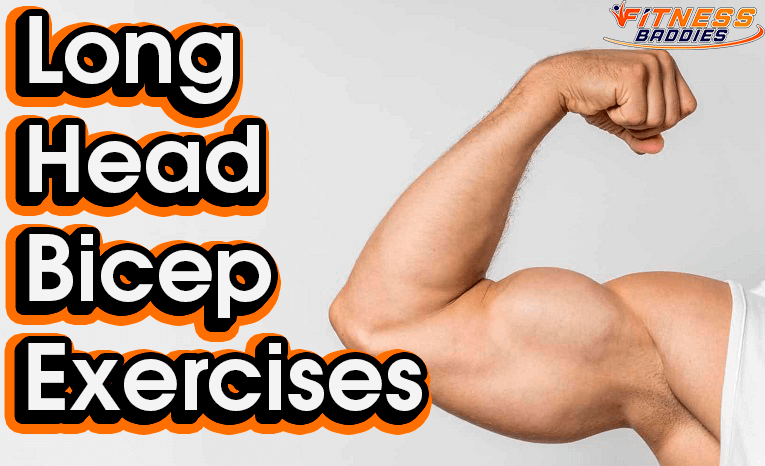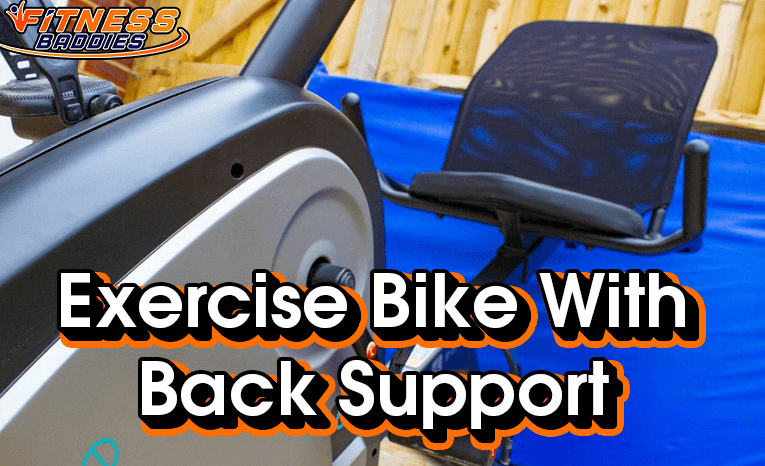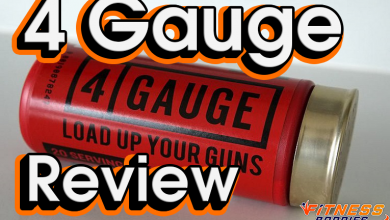What Is a Military Press?
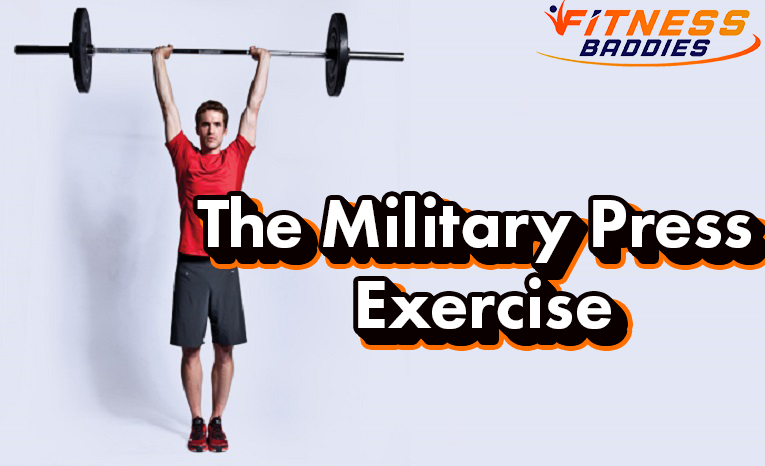
Let’s talk about the Military Press, the granddaddy of all upper body workouts.
It’s an absolute brute of a compound exercise that will engage every muscle group in your upper body and a few in your lower body as well, albeit to a lesser degree.
If you’ve read Arnold Schwarzenegger’s Encyclopedia of Bodybuilding, you’ll find that this was a staple in his workout regimen, and the key to them 3D deltoid muscles that he sported during his competitive days.
What is it about the military press that makes it so good for both, muscular hypertrophy and strength building?
That’s precisely what we are going to discuss.
But before we get ahead of ourselves, there’s something that deserves a mention.
A lot of people get confused because of the obvious similarities between the military press and the overhead shoulder press.
Well, they are one and the same exercise except for the position of your feet, which dramatically alters some of the muscles that are engaged as you move the weight.
In the military press, you bring your feet together, as if you are a soldier standing in attention.
In a conventional overhead press, the stance should maintain a feet shoulder width apart stance.
So, what are you waiting for?
Grab that barbell private. Let’s decode the military press and the perks of performing this monster move regularly.
How to Do the Military Press Exercise

If you are new to the military press, you might discover that it is a lot harder to pull off than it appears to be.
So, here are a few tips to help you make the most of this exercise and perform the military press correctly and with proper form.
- Always warm up before you get started with the military press. A set or two of light shoulder presses with adjustable dumbbells are a great way to warm up the ball and socket joint of the shoulders. You can also perform shoulder dislocates with a lightweight rod or a broom handle.
- Do the exercise in a squat cage or squat rack. This allows you to set the bar and have the weights attached at a comfortable level, preferably shoulder height, which should be just around the top of your collar bone or breastbone, rather than heaving it all the way up, from the floor.
Here’s a detailed guide on how to perform the move.
- Stand really close to the bar and grip the bar with a shoulder-wide grip and your palms facing forward, with feet shoulder width apart for stability. There are some cool budget barbells out there with good knurling for slip-free grip. The wrist must never be bent backwards at 90-degrees to avoid wrist pain later on. Just bend it enough to allow the weight to rest comfortably at the base of your palm. You might be tempted to go really wide with that grip, because it makes the move somewhat easier by reducing the range of motion. But that’s not ideal in the long run. Stick to a narrower grip for a complete ROM and proper stabilization of the torso. Again, remember to keep your feet shoulder width apart through the move.
- Some of you might be more comfortable with the hook grip, where the thumb is under the bar, or a suicide grip. This will not make any difference to the end result and is more of a personal preference than anything else.
- The elbows should be pointing forward and tucked in towards the sides. If they are flaring outwards, tuck them back in.
- Bend your knees slightly, somewhat like a quarter squat position and drive upwards through your glutes to lift the weight off the rack and place it on the upper chest – why you need to start with the weight at shoulder height. Step backwards so that you have room above your head for a full range of motion.
- Bring your feet together, squeeze your glutes and brace your core as you would when standing from a front squat. That’s the base that will drive the press.
- Take a deep breath and push the weight up, driving from your core, keeping it tensed throughout the move. As the bar clears your head, push your head forward slightly. This ensures that your biceps are perfectly aligned with your ears, and that you are not arching your back, which would place unnecessary pressure on your lower back.
- Slowly lower the weight to chin level, moving your head backwards so the bar is slightly in front of your face as it is lowered. Once again, keep your core engaged throughout. That’s one rep. Repeat for as many reps as needed.
Like this video:
Tips to Perform the Exercise Right
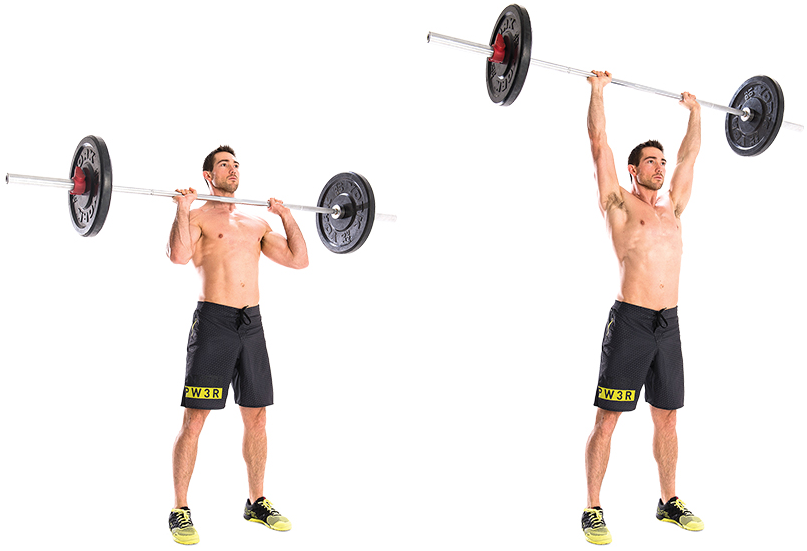
The Military Press is rarely performed in the gym anymore, as more and more athletes have veered towards the bench press.
But whenever someone does perform it, chances are that they do it wrong.
They either have their back position all messed up, or their elbows are not under the bar when it’s fully extended above their heads.
As one of the fundamental strength building exercises, it is crucial that you perform this right.
Here are a few tips to ensure that you master military pressing.
- Do not arch your back. Period. It causes unnecessary strain on multiple body parts and you will end up overcompensating for it, by recruiting muscles that you shouldn’t be recruiting in the first place. The pelvis should be right under the torso and an easy way to do this, is by squeezing the glutes throughout the move.
- Always aim to press up. The weight should move up in a straight line, not forwards or backwards, or in an arch. Straight up and straight down. One way to ensure that you keep the bar straight is by keeping your elbows in a vertical position, aligned with your ears.
- While lowering the weight, do not go lower than the chin. A rookie mistake is to lower the bar all the way to the upper breastbone. Not only does this make it all the more difficult to press, it also shifts the emphasis from the delts.
- Stay balanced throughout the move. Start with a light weight to master the perfect form for the complete range of motion, your head position and your back position. Then you can add weight as you go.
- You might discover that progress is painstakingly slow. But that’s exactly what makes this such a great move for your overall upper body development. It’s a hallmark of strength. So take your time and work your way through plateaus.
Benefits of the Military Press Exercise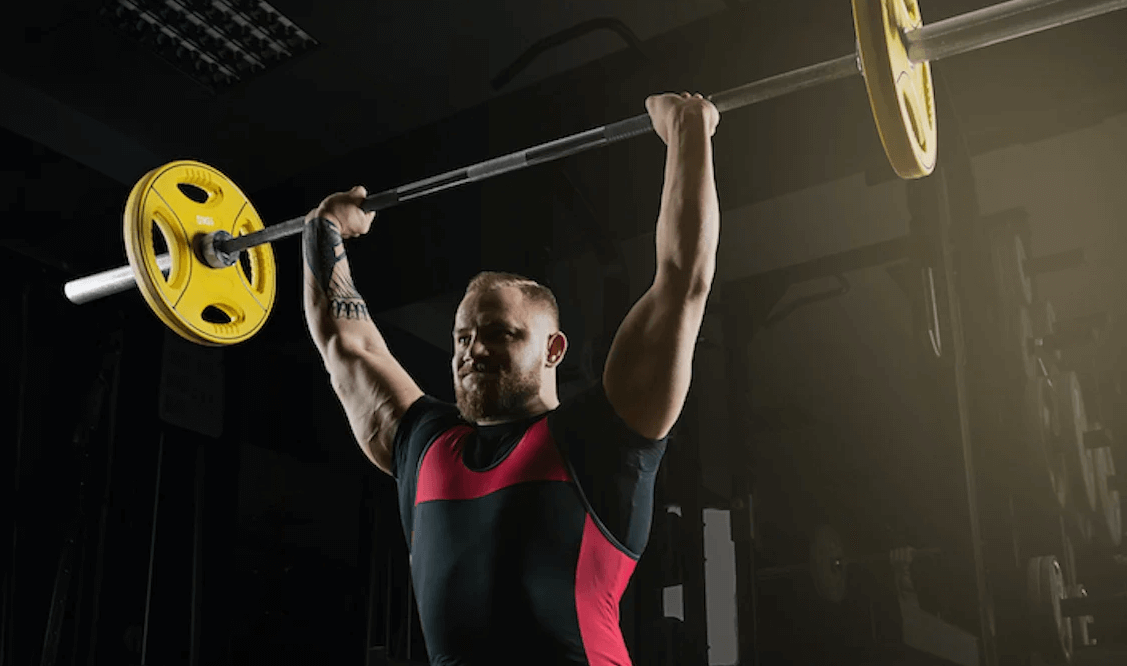
The strict overhead press, just like the standing press or the standing Military Press offers a greater range of benefits than most similar workouts. It comes in handy in different ways for both, the beginner and the seasoned athletes. And no, you don’t have to count on a personal trainer or exercise program to master it.
At one point in time, it was considered the most essential exercise to build upper body strength. It was only when powerlifters shifted to the bench press, that this technical lift lost favor amongst athletes.
But, if you are skeptical about adding it your routine, then here are a few reasons why you must reconsider your decision.
Strength
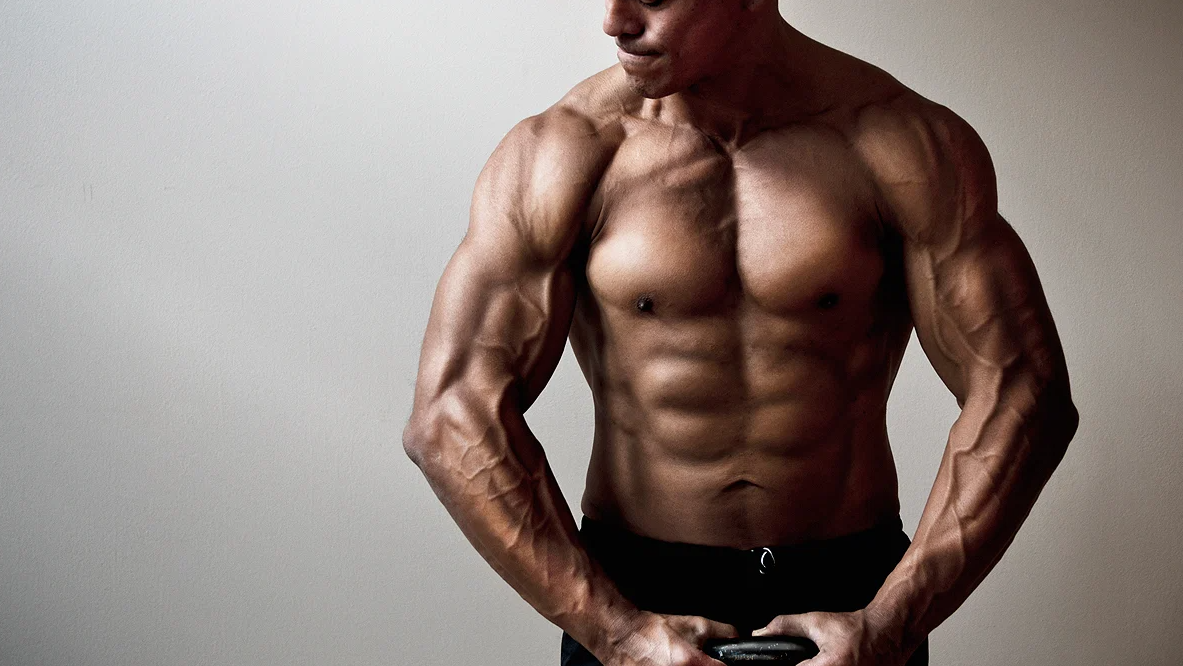
As we just mentioned, military pressing will allow you to quickly build massive strength in your shoulder muscles and sculpt your core muscles into a nice 10 pack abs. A stronger upper body can generate more power due to the enhanced neural capacity. The stronger you get, the more weight you are able to move, and heavier weights are the secret to hypertrophy.
That’s one of the main reasons why in a calisthenics vs weights bout, weightlifting comes out on top as far as hypertrophy goes.
If you watch any strongman competitive event, they will have at least one round where the strongman or woman is expected to perform a seriously heavy overhead press with odd objects logs or an Apollon’s Wheel or an axle.
Improved Pressing Power
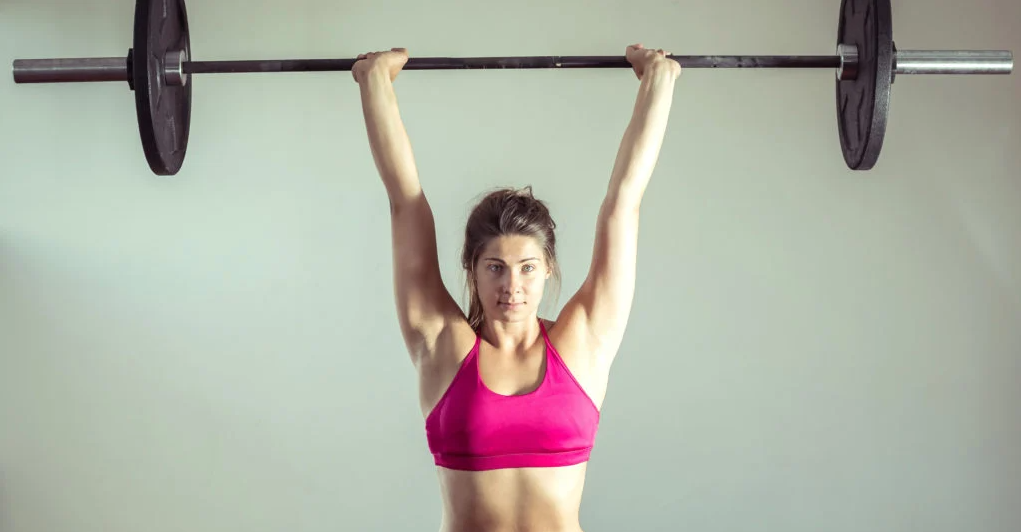
The primary muscles that you recruit in a military press are your triceps, your delts and your pecs, which are also the muscles that you recruit in a bench press. As you get stronger and are able to move heavier weight in the overhead press, you will find that your bench press strength improves as well and you achieve a proper form.
Real Life Functional Fitness
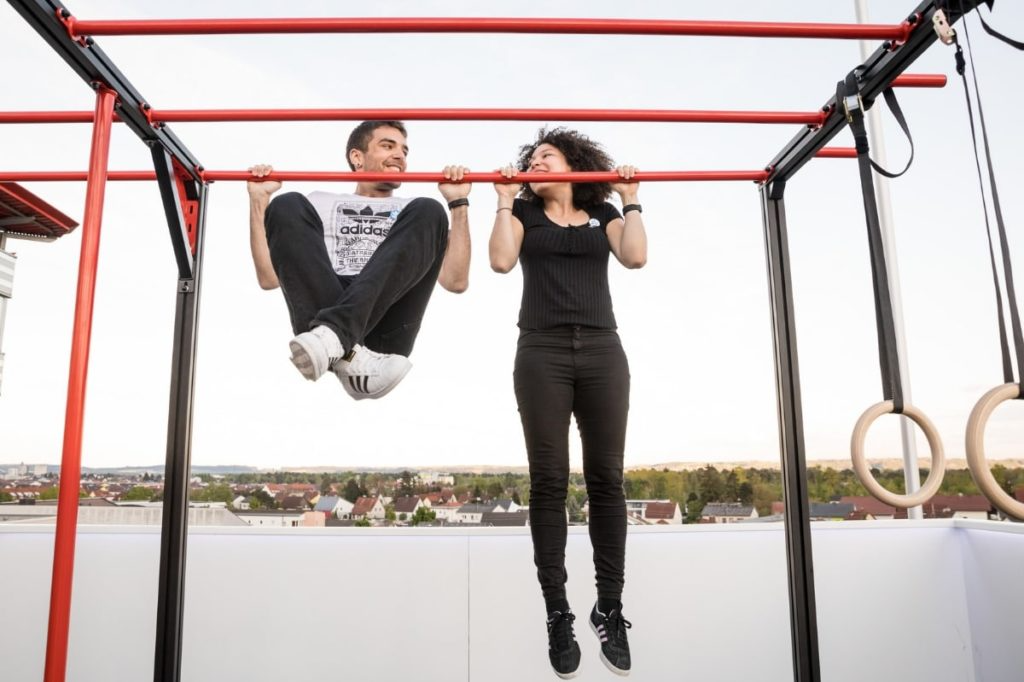
If you are able to perform the military press with good form, without hyperextending your back, you will recruit the stabilizer muscles such as the erectors, rectus abdominis and the oblique muscles, which will make you a better athlete. In real life situations, overhead pressing strength can be critical to prevent injuries. Imagine lifting up a large box of tools and racking it in a shelf overhead.
Massive Shoulders

Just to let you know that we are not always hung up on the fitness aspect of it, military presses will also help you build massive 3D deltoids and different shoulder muscle sections. You will primarily develop strength and size in the anterior and medial deltoids. But even your posterior deltoids will get engaged. It’s such a great move for overall shoulder muscles gains.
Beginner Friendly

It’s tough to perform heavy military presses even with the right equipment. But if you start light, it’s actually one of the easiest upper body workouts and most people find it easy to nail a proper form this way, too. Given the multiple benefits that it offers, we see no reason why it shouldn’t be included in every beginner workout plan, and can be used for youth weight lifting training to enable young turks to master this move right from the start.
You don’t really need to measure your fitness level before doing this exercise, other challenges I did in the past required a certain fitness level; these were like doing 100 jumping jacks a day and doing 100 pushups, 100 sit-ups, and 100 squats for 30 days.
The Muscles Worked by The Military Press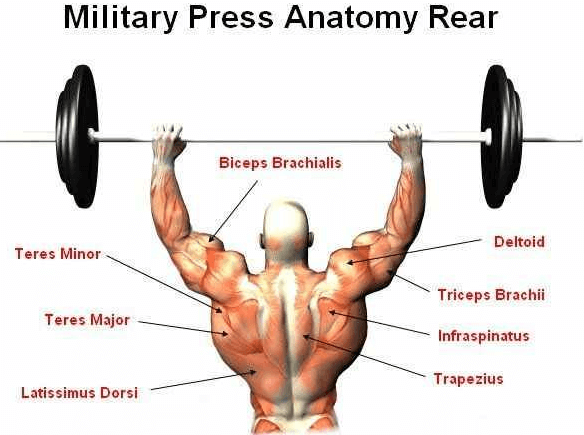
Broad, defined shoulders are the key to an aesthetic upper back and body in general.
You might have massive arms with thick triceps, but unless you have wide ‘boulder’ shoulders, you will lack the aesthetic appeal that most fitness buffs yearn for.
There’s no better way to build size, definition and striations in your shoulders and upper back than strict military presses.
That’s just the tip of the iceberg. Here are some of the muscles that are recruited when you perform the military presses.
Shoulders

As you press the barbell overhead, your shoulder muscles get flexed and drawn away from the body by two primary muscles of the deltoids. That’s the anterior and the lateral delts, which is what makes this one of the most effective shoulder exercises.
The anterior deltoids show a 33% activation in the overhead presses, while the lateral deltoids are recruited 28%. The rear deltoids show an 11% activation, which might seem tepid in comparison to the front delts.
But make no mistake, it’s among the most effective well-rounded upper back and shoulder exercises for overall women as well as men’s health and fitness. Other exercises that work the shoulder muscles include, Zottman curls and wall angels.
Triceps

While your shoulders do the bulk of the work, the medial and the lateral heads of the triceps are called in to stabilize your elbows when the weight is extended fully above your head. It doesn’t work the long head of the triceps, which is a minor disappointment. But you can easily target the long head with other isolation moves.
Another exercise to work the triceps is the seated tricep press, you can alternate between workouts that work your triceps and biceps to get a more muscular looking arm, you can even work both the triceps and biceps on the same day, for added pressure on these muscle areas.
Traps
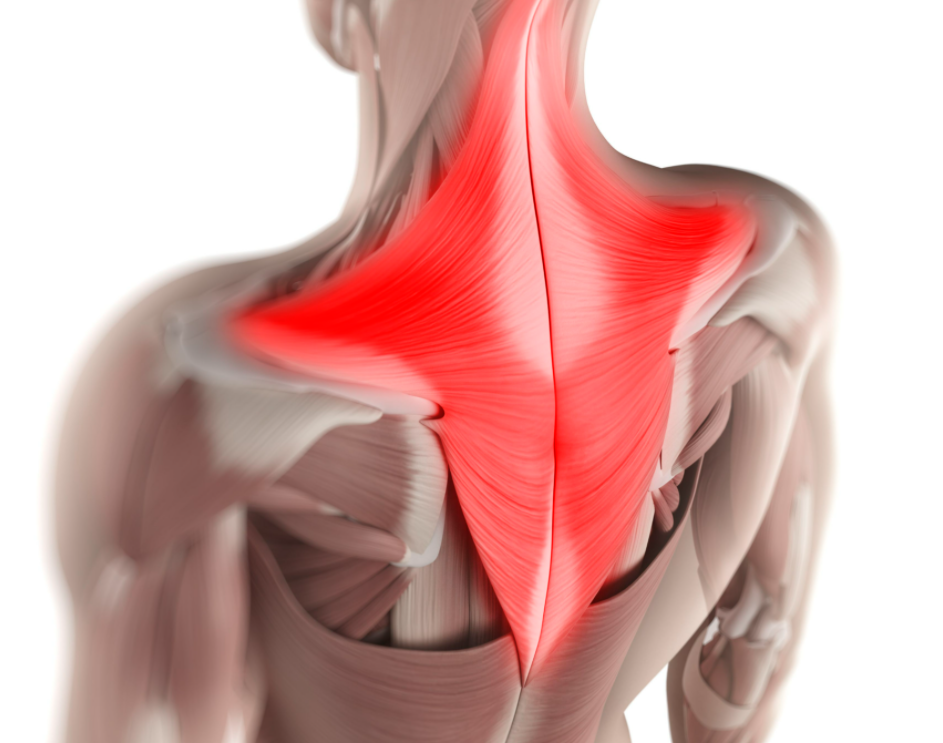
Not many people know that the military press is also a terrific exercise for building massive traps. The traps are activated as they assist the shoulders in moving the weight overhead. In fact, as you build strength and start to move serious weight overhead, you can avoid trapezius isolation exercises altogether.
Abs

When you perform the military press with your feet close together, there’s a greater stimulation of the abdominal muscles and the oblique muscles. In fact, clinical studies reveal that the military press might be better at building your core muscles than the deadlift. Double crunches are another workout that yo can do that targets your core muscles if you are serious about building insane 12 pack abs to impress the girls.
Pecs
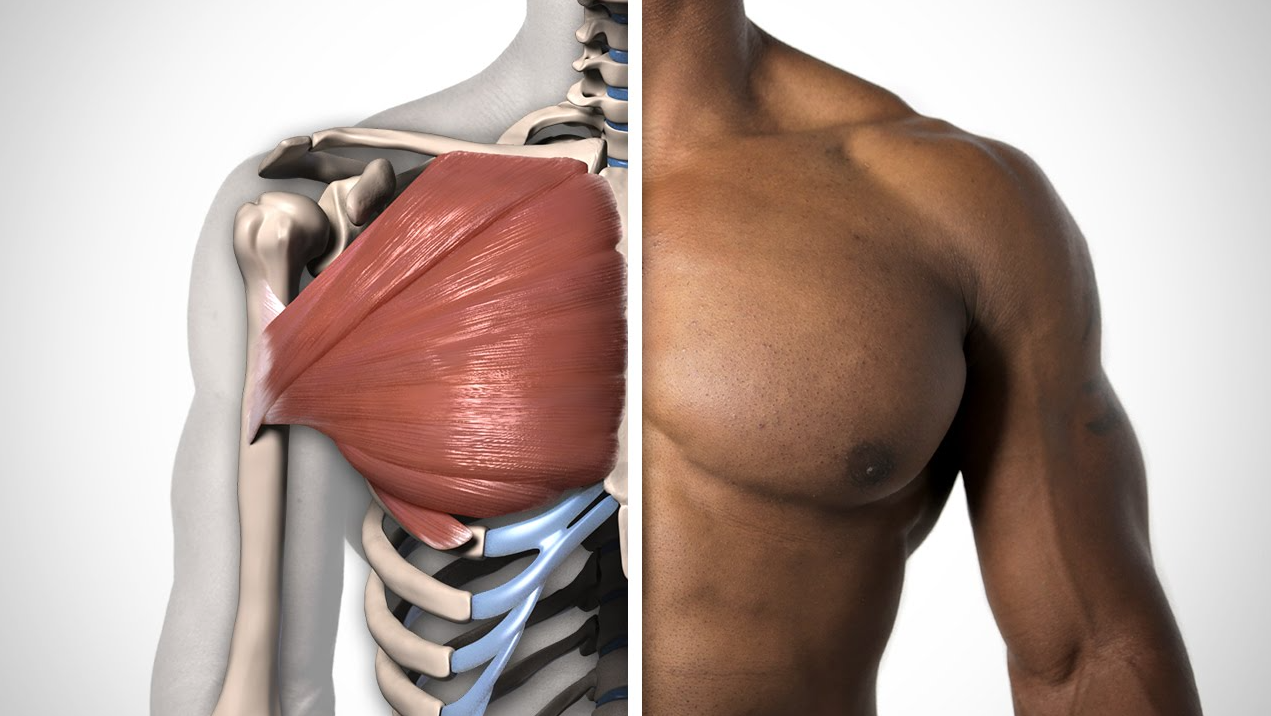
While it’s not the best exercise for your pecs, it will engage your upper chest to a significant extent.
Postural Muscles

Another advantage of the military press is that it engages and strengthens your postural muscles such as the serratus anterior and the supraspinatus, infraspinatus, and teres minor, all of which are external rotator muscles.
This improves your posture and prevents postural problems that arise with aging or lifestyle habits, which happens to be the most hectic single issue many seniors are struggling with.
Mistakes Beginners Make When Doing The Military Press
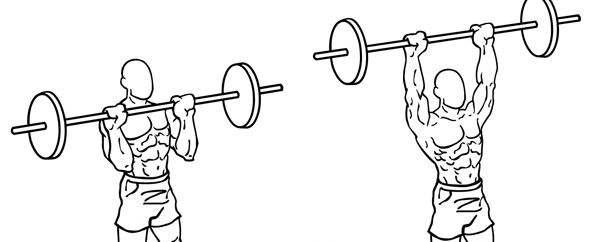
We have already discussed a few common mistakes that beginners tend to make while performing the military press in the ‘tips’ section above.
Here are a few more that you might find yourself making, especially if this is a new exercise to you, or when you hit stagnation while aiming for progressive overload.
- Turning it into a push press: What’s a push press? A push press is a military press with some assistance from your legs. Slightly bend your knees and push the body upwards using your legs to generate some momentum which assists you in moving the weight. Now, a push press is a pretty good exercise in its own right. But if you are trying to perform the military press, your legs and hips have to stay locked. Any momentum that you generate from your lower body is considered cheating and you are taking away from the many benefits that the exercise offers.
- Bending your wrists: As we mentioned earlier, bend the wrists only to keep the bar close to them. If you are bending the wrist backwards at 90-degrees, making it hard to avoid injury. Also keeping the wrists straight allows the forearms to press directly overhead.
- Elbow position: The elbows must face forward at all times during the press and be right under the bar at a 90-degree angle. This will allow you to push the bar up in a straight path and for the shortest distance. Pushing the elbow outwards or backwards will result in an unnatural arc, which will either reduce the efficiency of the exercise, or cause an injury.
Military Press Variations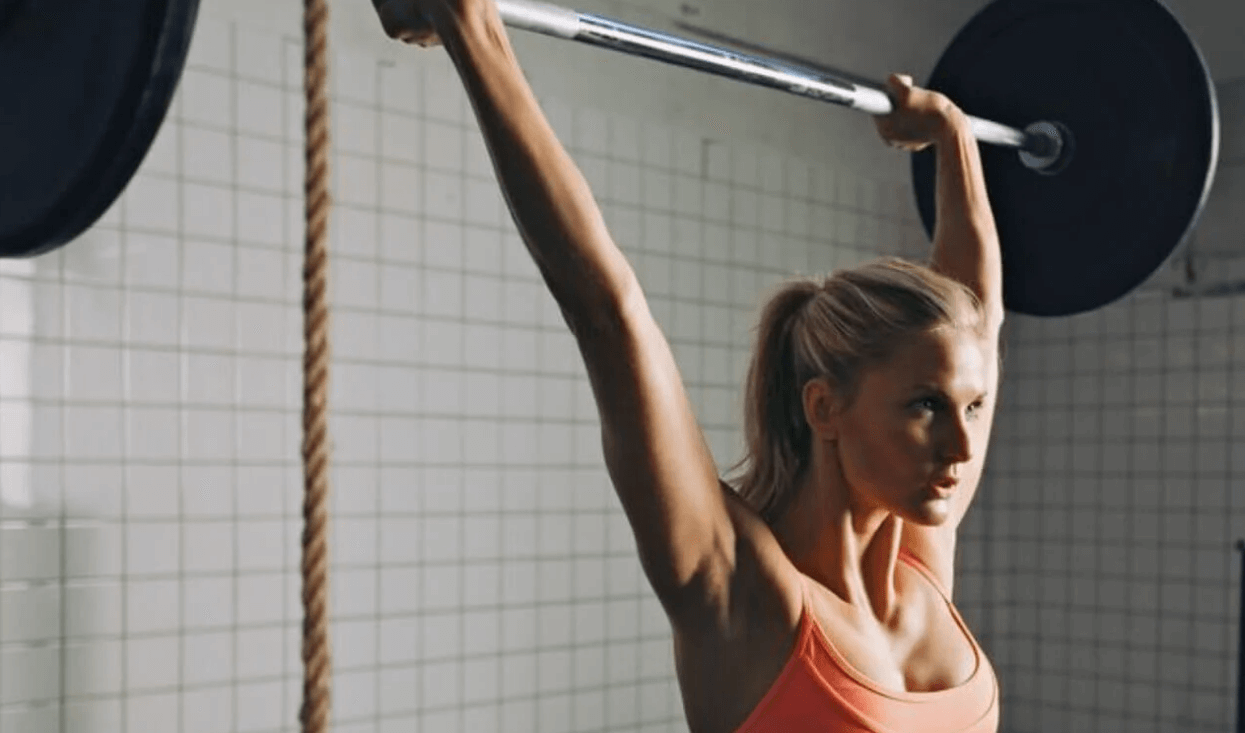
Many people have mobility issues which prevent them from performing the military press with heavy weights.
Sure, you can start off with light weights and keep adding weight as you gain more strength and mobility, but here are some military press variations that provide a great workaround.
Some of them also offer additional benefits such as recruiting the rear deltoid slightly more than the military press.
Arnold Press
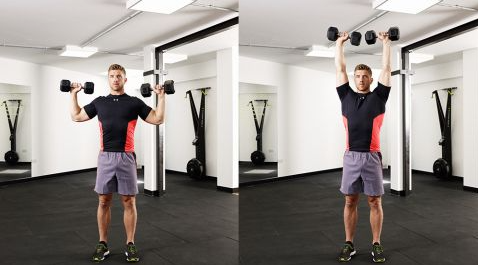
The Arnold Press is a variation of overhead presses, used by the Austrian Oak to recruit all three muscles of the deltoids. Not only does it allow you to use less weight, because of the increased time the muscles spend under tension, it also helps improve your posture. Moreover, it’s a dumbbell-only exercise with fantastic results and can be performed right in your backyard gym.
- Start with a dumbbell in each hand (of course, as long as it isn’t one of those freaking heavy millennium dumbbells). Keep your arms bent, just like at the top position of a bicep curl.
- Your palms should be facing you. This is your starting position.
- Instead of pushing straight up, as is the case with traditional shoulder presses, spread out the arms outwards as you push up and twist your hands as the weight clears your ears.
- The palms will now face outwards and extend the weights right until the biceps are aligned by your ears. That’s one rep.
- Repeat for the desired number of reps.
Like this:
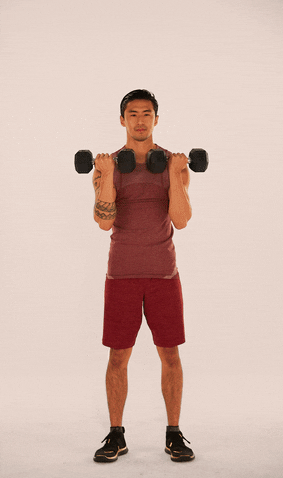
The Arnold Press Exercise
Seated Barbell Shoulder Press
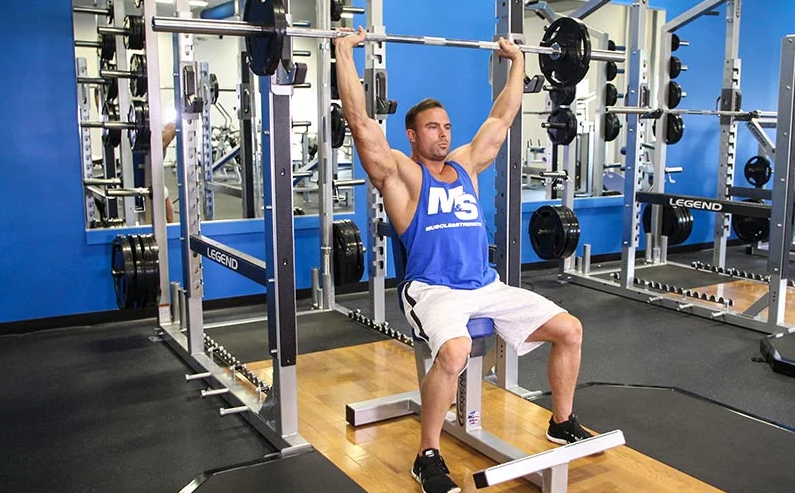
You can call it the seated barbell military press, or the seated military press if you will.
The seated barbell shoulder press is a variation that’s performed while seated on a flat bench – pretty much the same way you’d do a seated dumbbell press.
The seated position provides you with added spinal stability and may prevent overarching the back, especially for those who face this problem while performing the standing military press.
Also, clinical studies reveal that beginners might be able to move slightly more weight while they are seated. So, if you find yourself struggling to push beyond that 1RM, you might want to switch positions.
- The seated press is performed in exactly the same manner as the military press, it’s more like a seated military press of sorts. The only difference is that you use less of the postural muscles and the lower body. There’s absolutely no way you can turn this into a push press and cheat.
- If you are new to this, you can perform it using a smith machine so you can have the weight slightly in front of you for a start. Else, you might need a spotter to chip in if you’re unable to lift the bar back up.
Like this:
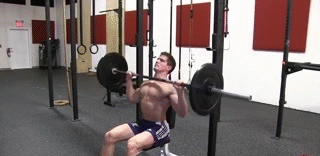
The Seated Barbell Shoulder Press Exercise
Military Press Alternatives
While the military press is hands down, our favorite upper body workout, there are some limitations to it.
It does not recruit the pectoral muscles enough to allow complete development. Also, it does not engage the long head of the triceps.
Here are some great alternatives that you should also consider including in your workout plan on push day, or other days if you follow a two-body part split.
Barbell Bench Press

There’s no better alternative than the good old barbell bench press. It recruits the same three primary muscle groups as the military press, and is one of the fundamental upper body exercises.
Besides, it’s one of the easiest exercises to master.
- Lie on a flat bench. Grip the bar positioning your hands slightly wider than your shoulders.
- The palms must face upwards. Some people like to use the suicide grip without the thumb circled around the bar. But we do not recommend it unless you are an experienced lifter. There’s always the risk of the bar slipping out of your grip and landing on your torso.
- Lift the bar off the rack and slowly lower it to your chest. Take a deep breath as you do this. The palm must be directly above the elbows, in a straight line at this point.
- Push the bar upwards, exhaling as you do. You should try and maintain a same path every time you push the bar back up.
Like this video:
While the bench press is a very simple exercise, there are tons of things that can go wrong with it.
One of the commonest mistakes that we’ve seen athletes make, is move a lot of weight without mastering the form. That’s a recipe for a rotator cuff injury, amongst other things. To avoid injury, go slow, go light. Even better, start with the dumbbell bench press.
Dumbbell Bench Press

The Dumbbell bench press is a variation of the barbell bench press, which is performed with dumbbells.
It’s a more beginner friendly version of the exercise and has a whole bunch of other advantages.
For starters, it’s easier to just drop the dumbbells if you ever fail mid-rep. You can perform this without the need for a spotter, sophisticated exercise program, or any certified personal trainer.
Also, some people tend to develop disproportionate chest muscles with the bench press due to their dominant hand moving more weight. This makes that go away since you move an equal amount of weight with both hands.
- Lie on a flat bench with a dumbbell in each hand. Keep your feet flat on the floor. Do not arch your back.
- Push the weight up, keeping your palms up and the weight directly above the shoulders.
- Lower the weight, while pulling the abdominal muscles in.
- The elbows should be lower than the shoulders at this point.
- Roll back the shoulder blades to pinch them together and expand your chest.
- Push the weights back up keeping the shoulder blades in this position. Do not lock out the elbows at the top of the move.
Like this video:
Dumbbell Floor Press

The dumbbell floor press might seem primitive in comparison to its benched, barbelled sibling. But it’s a terrific exercise that’s gentler on your body, because it prevents back arching.
It does reduce the range of motion a little, but this has a hidden advantage. This limits the extension at the shoulder joint, which in turn recruits your pectoral muscles a lot more.
Moreover, you can do this with one dumbbell and isolate each pectoral muscle.
There’s no special tips on offer. Just think like you are performing the dumbbell bench press on the floor instead of the bench. That’s it. Go build some pecs and engage some core.
Video Illustration of this exercise:
Related Readings:
- Can Stretching Make You Taller? Myth or Reality?
- I Did Squats Every Day For 3 Months – Should You? Here’s What I Learned
- Does Exercise Increase Metabolism? – Science Backed Research Says Yes
- Tips & Strategies I Used to Stop Eating Sugar
- Natrural Pre Workout
- The Best Workouts & Exercises for Teenage Girls (As Backed By Science!)
References:
- https://pubmed.ncbi.nlm.nih.gov/26464884/
- https://www.sciencedirect.com/science/article/pii/S2095254614000106
- https://journals.lww.com/nsca-jscr/fulltext/2012/12000/Core_Muscle_Activation_During_Dynamic_Upper_Limb.6.aspx
- https://www.researchgate.net/publication/319607633_Exploring_the_Standing_Barbell_Overhead_Press

